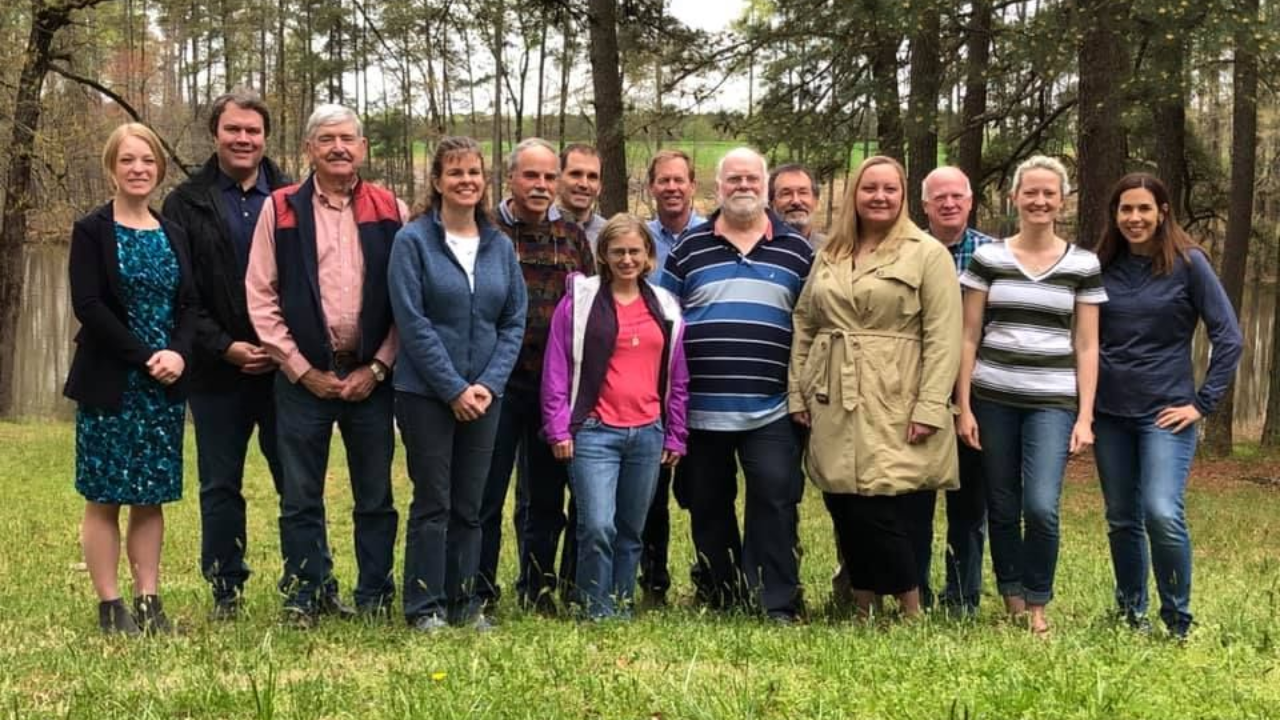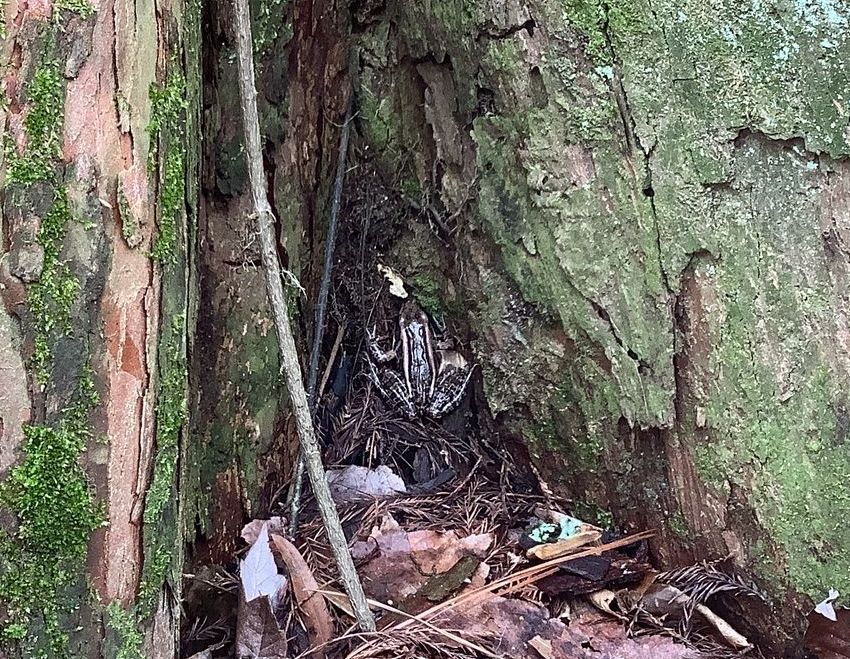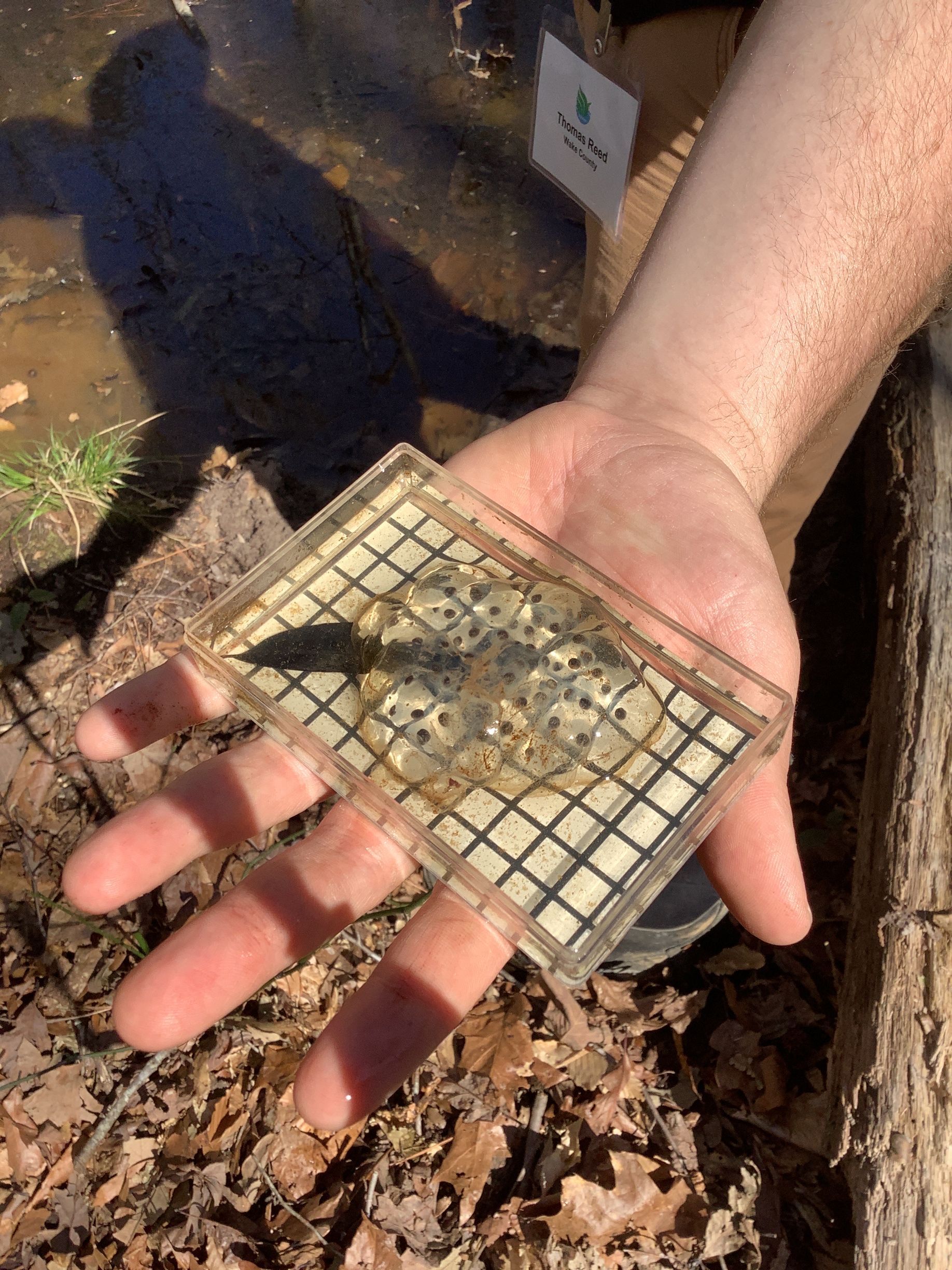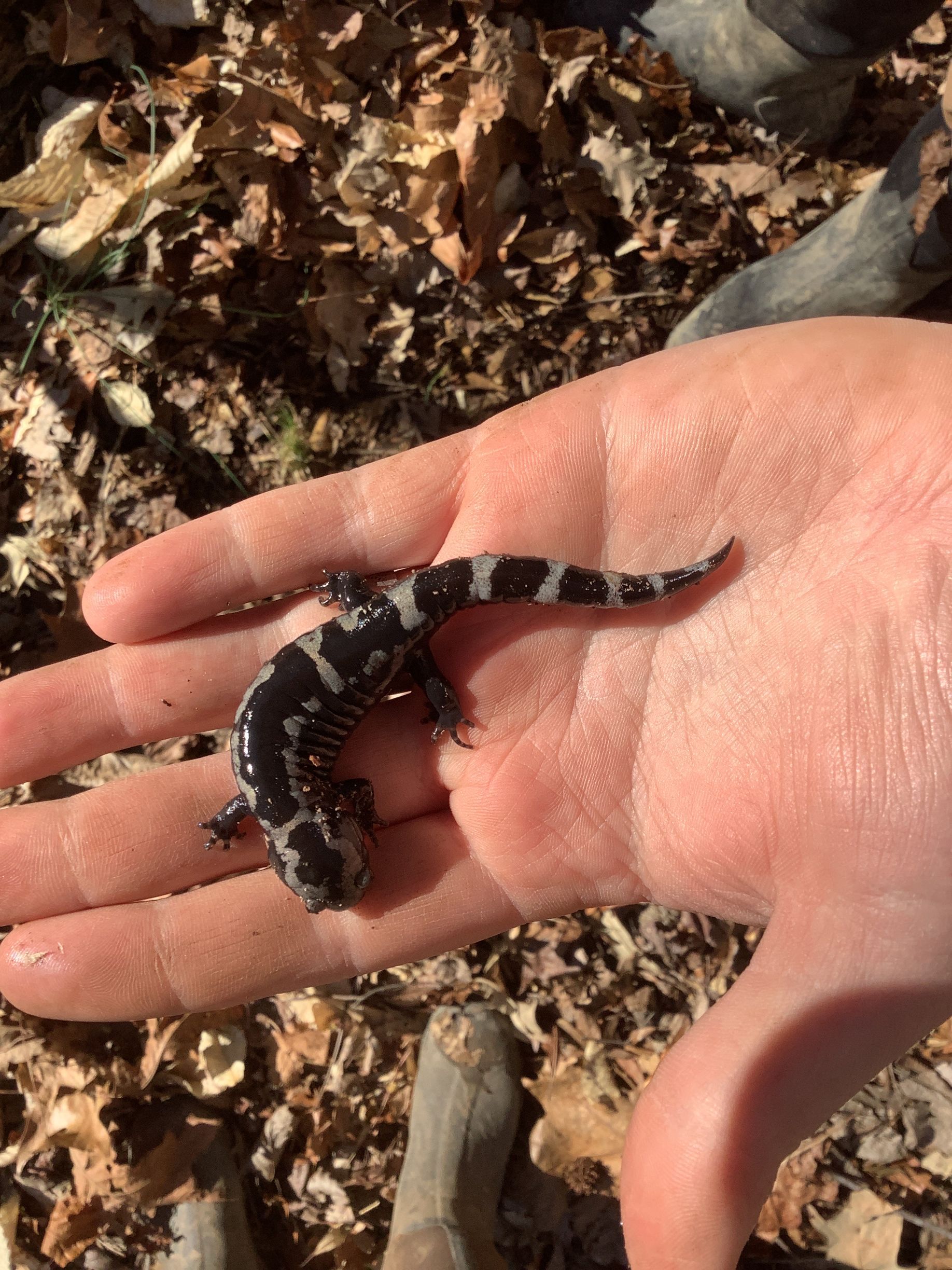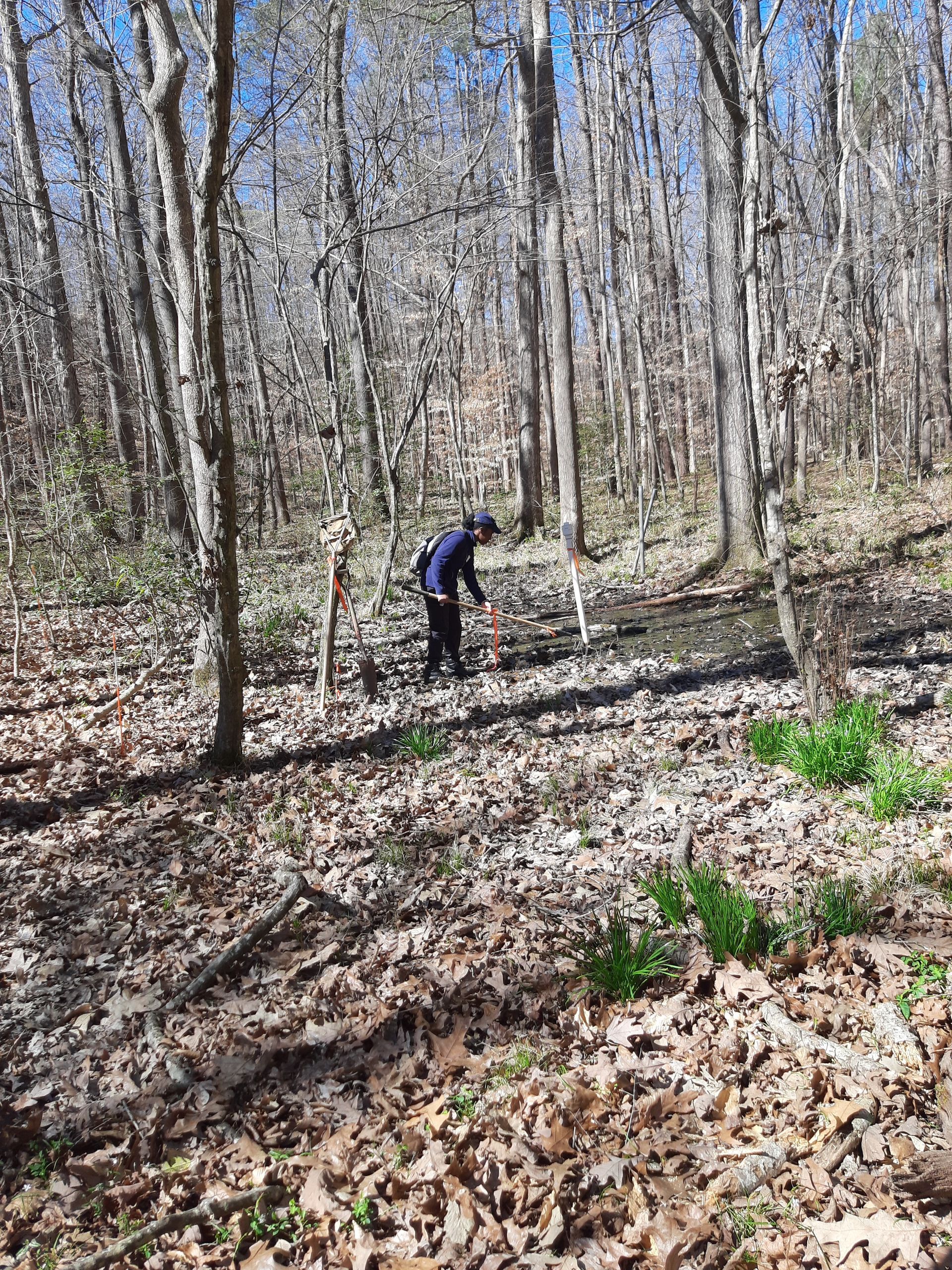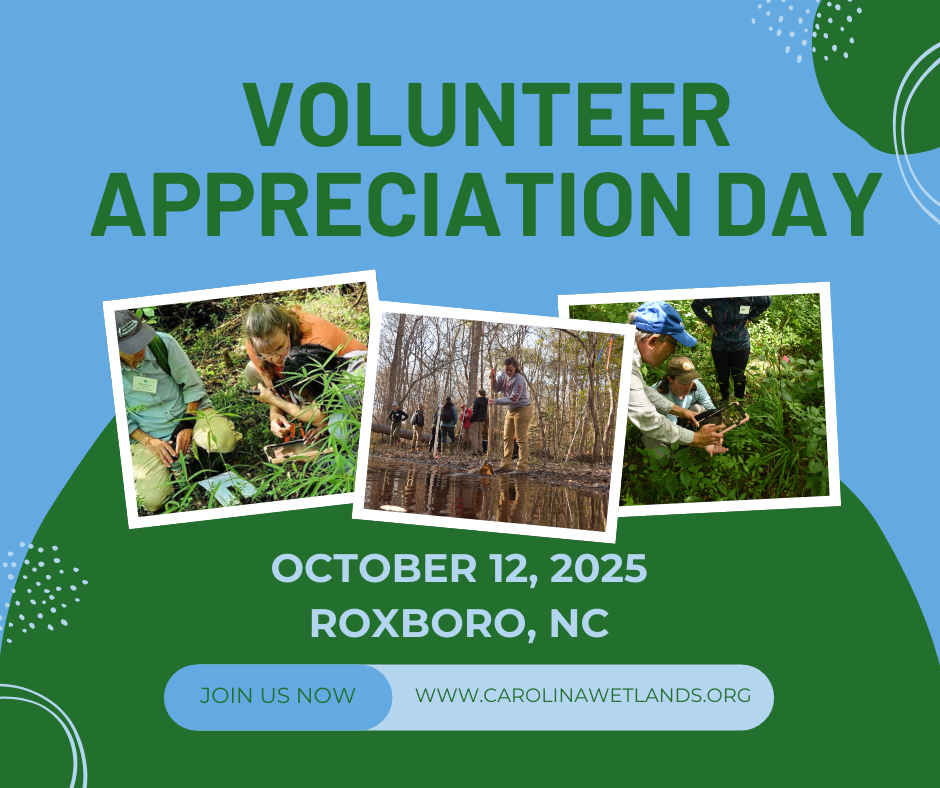We monitored at Robertson Millpond Preserve on Friday and managed to avoid tripping on the many cypress knees that populate our monitoring locations. Robertson Millpond Preserve is unique in that it is home to the only bald cypress habitat in Wake County, NC. We didn’t find many salamanders at this site, but we did find a Green Treefrog and Pickerel Frog.
New Volunteers Get Their Feet Wet in First Round of 2023 Volunteer Wetland Monitoring
The first Volunteer Wetlands Monitoring Pilot Program weekend of 2023 provided plenty of opportunities to get our feet wet (both literally and figuratively)! We had lots of new people volunteering this weekend who got to learn our monitoring protocols for amphibian surveys, water quality sampling, and hydrology monitoring for the first time. We are so excited to see the program expanding and meet new, amazing wetland warriors!
On Sunday, we had a beautiful monitoring session at Hemlock Bluffs Nature Preserve. We were lucky enough to be joined by an employee of the preserve who says she can “smell where the salamanders are.” We were able to find salamanders in every life stage from egg sacks to adults, although the numbers that we saw may have been impacted by other herpetology surveys in our study area earlier in the week.
It was great to see so many new faces and add to our already wonderful group of wetland warriors. We are looking forward to getting back out in June for another round of water quality, hydrology, and amphibian monitoring. We will also be doing our vegetation surveys, so we’ll be calling all plant lovers for our next monitoring events. In the meantime, we hope to see everybody at our second Wednesday of the month Meet & Greet social events and to get back in the wetlands soon for some more practice with our field skills.
You might also like
